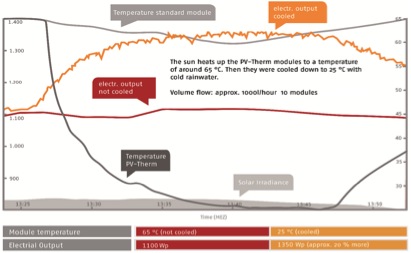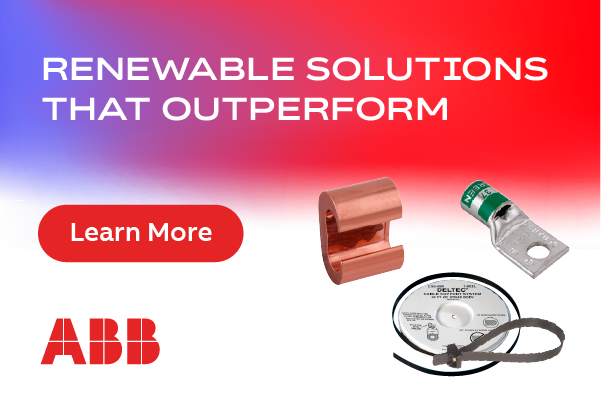Technology Upgrades: Combined photovoltaic-thermal modules
 When French scientist Edmond Becquerel discovered the photovoltaic effect in 1839—creating voltage or electricity from emitted light—little did he know, or even imagine, the inventions and developments that would follow. Almost two centuries after Becquerel’s discovery, solar PV technology has advanced to include an installation on the International Space Station.
When French scientist Edmond Becquerel discovered the photovoltaic effect in 1839—creating voltage or electricity from emitted light—little did he know, or even imagine, the inventions and developments that would follow. Almost two centuries after Becquerel’s discovery, solar PV technology has advanced to include an installation on the International Space Station.
As research and real-world performance demonstrates, however, PV technology has met successes and challenges over time. One drawback of the conventional photovoltaic module is that once the surface temperature of the glass laminate starts to rise, the module’s ability and efficiency in producing power begins to decline.
In fact, for every degree above 77° F (25° C), efficiency of a module declines by 0.5%. If the surface temperature rises high enough, a module will completely stop producing electricity.
Beyond rising temperatures
In an attempt to overcome increases in temperatures and its limiting effect on solar modules, engineers have developed a module that incorporates liquid cooling capabilities. By circulating liquid across the back of the module laminate, heat from the surface of the module is transferred to the liquid and transported away. This circulation ensures maximum output by not only counteracting the sharp fall of voltage, but also by counteracting the significant loss of power that occurs when crystalline modules face higher cell temperatures.
The resulting combined photovoltaic-thermal (PV-T) module represents a major leap forward in the evolution of solar energy, allowing for the capture and utilization of more of the sun’s energy. On a summer day, the temperature behind a conventional PV module can exceed 180° F (82° C), resulting in a 25% to 30% drop in electrical output. PV-T essentially extracts heat from the PV portion of the module, raising the module output dramatically, while simultaneously providing useful thermal energy.
As can be seen in Figure 1, the increase in output of a module is a fairly substantial once cooling is initiated. Cell efficiency can increase up to 30%, and overall electrical output is up to four times greater than a conventional photovoltaic module. And, much like conventional PV systems, PV-T systems use direct and indirect sunlight; therefore, they can be installed in any climate zone.
A working model
Advantages to the combine PV-T system are many, and include:
- Production of thermal energy. Including the availability of significant amounts of “free” thermal energy.
- Increased life expectancy of the module. By cooling and holding a module at a more constant temperature, it isn’t subjected to harsh up-and-down temperature cycles.
- Better space utilization. The combination of higher output and higher efficiency means better utilization of limited roof or rack space, allowing for more modules to be installed with fewer installation costs.
- A cooler roof surface. Extracting heat from the back of a module lowers a building’s cooling load during the summer months and extends the life of the roof.
An additional benefit to this system is that once the thermal energy has been captured in the circulating liquid, this energy can be transferred into various other energy systems—simply and directly (such as the heating of hot water through a heat exchanger in a water tank). Furthermore, the energy can be used to create heating and cooling through adsorption technologies and drying operations.
This technology is equally suited for all climate zones, including those zones in which the potential for ice and snow build-up have long been reasons not to utilize solar power. The captured and stored heat can be used to melt off the snow from the module by simply reversing the flow of the liquid. In climate zones where the modules face very high ambient and glass surface temperatures, the cooling effect will keep modules at optimum energy production temperatures, extending the life expectancy of the modules.
Conclusion
Though we’ve come a long way since the days of Edmond Becquerel, it is very much to his credit as the researchers and engineers of today are still working with his initial scientific discovery. Newer challenges might have arisen related to photovoltaics, as we attempt to maximize their efficiency and generating power, but the PV effect is now allowing many to benefit from the renewable power of the sun. The combination module PV – Therm was developed to counteract the sharp fall of voltage and the significant loss of power of crystalline PV modules, when faced with higher solar cell temperatures.
As energy costs soar and the environment faces an uncertain future, protecting the global climate has become one of the greatest challenges facing modern society. Through a combination of past research and findings, and future solutions and technologies, we might one day find ourselves progressing full-speed ahead to a healthy, energy efficient climate.
Established in 2009, Solarzentrum North America (SZNA) started with distribution and installation of PV-Therm modules. Since March 2013, they’ve also established manufacturing operations in the US.
Solarzentrum North America
www.szna-usa.com
Author: Sean Furlow & Marie Rauscher
Volume: May/June 2013











.png?r=8641)
